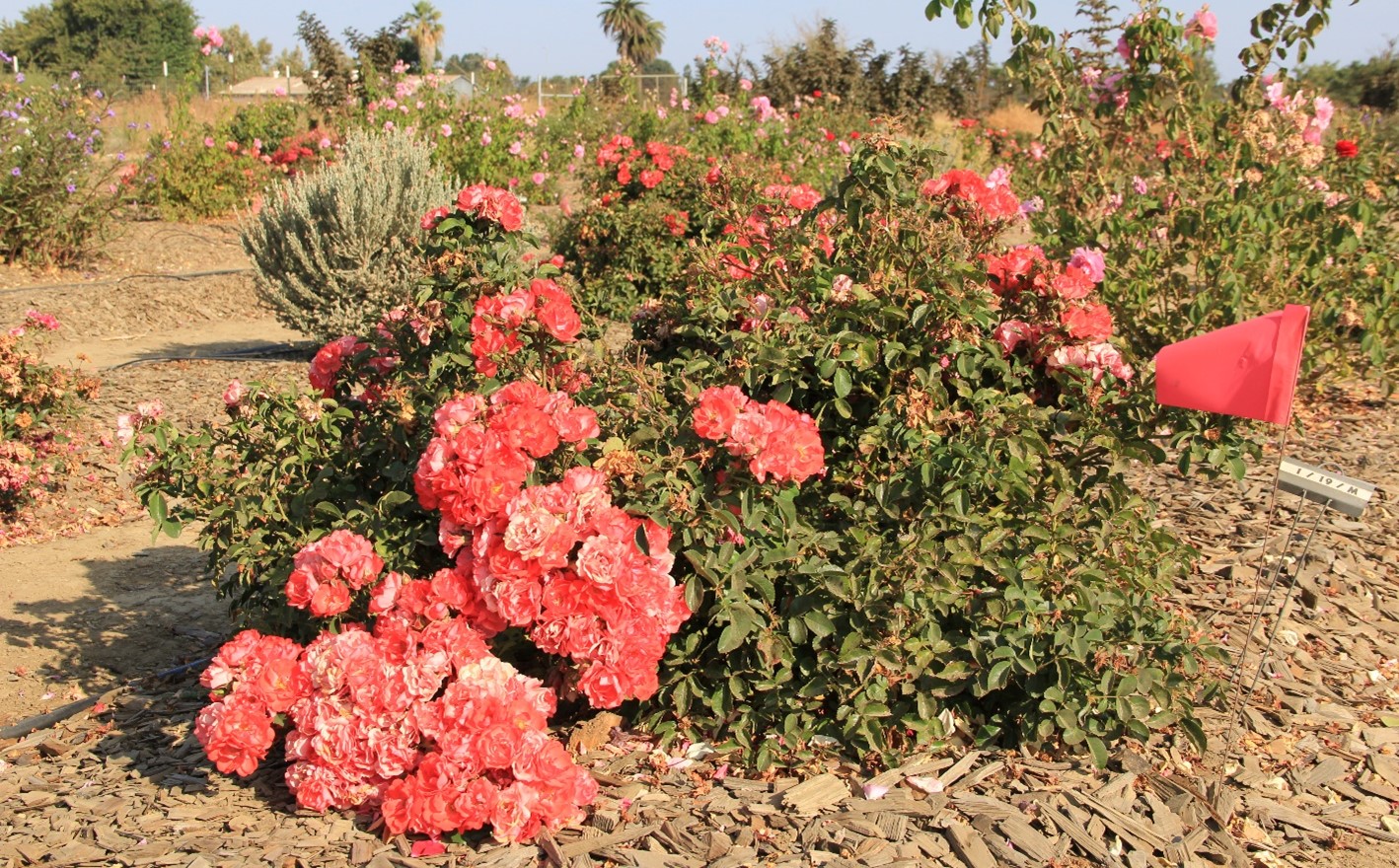Rosa 'Meidrifora'

Coral Drift® rose in April with heavy show of blooms. Photo: SK Reid.
Summary
UC Davis is located in Davis, California, this site has a silty clay loam soil and plants are irrigated with potable water. More information about the field sites is located in the Nuts & Bolts section.
One of three Drift roses in the trials this year, Coral, Pink, and Red, this one had perhaps the splashiest floral display but combined with the greatest susceptibility to powdery mildew. For the most part, they outgrew the powdery mildew damage by July, although some plants retained disfigured foliage. When weather cooled in October, the disease began showing signs again on a few plants. The floral display was significant from April through October with peaks in April, June, and August (Table 10). The color of this cultivar is eye-catching, especially when juxtaposed with other plants with gray foliage or purple flowers. The individual blooms have multiple petals that do not always open completely to expose the stamens or nectar, so if pollinator resources are desired, one of the other cultivars is recommended. The best foliage appearance was on 40% of ETo. These groundcover roses reached an average height of 23.4” (59.5cm) with a spread of 55” (140cm), with no significant differences between treatments in regards to size.

Coral Drift® rose on the 40% ETo treatment in July 2016. Photo: SK Reid.
Basic Info
| Submitted by: | Star Roses & Plants |
| Site(s): | UC Davis |
| Trial Exposure: | Sun |
| Year evaluated: | 2016 |
Height & Width after 2 years: | 1.9' x 4.6' |
Reported Height & Width at maturity: | 1.5' x 2.5' |
| WUCOLS plant type: | S Gc |
| Water Needs & WUCOLS Region: | Low - Region 2 |
Mean Overall Appearance rating: (1-5 Scale, 5 is highest) | 3.8 |
Flowering Months: | April-October |
Coral Drift® rose on the 40% ETo treatment still blooming heavily in September 2016. Photo: SK Reid.
